There are two sizes of MacBook Pro: the 13-inch and the 15-inch model. Both bring with them Intel"s 7th generation Kaby Lake chips, Retina displays, solid-state Flash storage, and Apple"s design expertise. However there are some crucial differences.
In many ways the 15-inch MacBook Pro is more deserving of the name "Pro" than it"s smaller sibling, which is certainly not the same machine in more miniature form.
In fact we’d argue that the 13-inch MacBook Pro shouldn’t really be sold as a pro laptop, although that depends on your definition of pro, and it doesn’t necessarily mean that it"s not a good choice for non-pro users.
But who is the 13-inch MacBook Pro for and is this mid-range Mac a good deal? And if you purchased one of the MacBook Pro models introduced in October 2016, should you be a bit miffed that Apple has upgraded its offering so soon?
Price and availability
The new 13-inch MacBook Pro is available right now from Apple.
Prices start at £1,249/$1,299 for the entry-level 2.3GHz model. While it might look like the entry-level price of the 13-inch MacBook Pro is just the same as the previous generation there is one crucial difference.
When Apple launched the 2016 MacBook Pro the starting price for the 13-inch model was £1,249/$1,299 but this was for an older 13-inch model with a 5th generation Intel processor (Broadwell). At the time the price of the entry-level 13-inch MacBook Pro with the 6th generation Intel chip (Skylake) was £1,449/$1,499.
For 2017 Apple has dropped this old 13-inch Broadwell MacBook Pro offering customers a brand new 13-inch 7th generation Kaby Lake MacBook Pro for the same low price.
The pricing of the 13-inch MacBook Pro is as follows:
- 2.3GHz Kaby Lake i5 dual-core processor, 8GB RAM, 128GB storage, Intel Iris Plus Graphics 640, £1,249/$1,299
- 2.3GHz Kaby Lake i5 dual-core processor, 8GB RAM, 256GB storage, Intel Iris Plus Graphics 640, £1,449/$1,499
- 3.1GHz Kaby Lake i5 dual-core processor, Touch Bar, 8GB RAM, 256GB storage, Intel Iris Plus Graphics 650, £1,749/$1,799
- 3.1GHz Kaby Lake i5 dual-core processor, Touch Bar, 8GB RAM, 512GB storage, Intel Iris Plus Graphics 650, £1,949/$1,999
Build-to-order options:
- 3.3GHz Kaby Lake i5 dual-core processor + £90/$100
- 3.5GHz Kaby Lake i7 dual-core processor + £270/$300
- 16GB RAM + £180/$200
- 1TB SSD + £400/$400
In terms of the 13-inch model, the new entry-level price drop is refreshing (or rather, the removal of the older 2015 model and the introduction of the new 2017 model at the same price). Considering that the MacBook has a comparable price for a lower-spaced machine, the 13-inch MacBook Pro looks like a good deal.
As for the top of the range 13-inch model, we think that at £1,949 this might be a bit overpriced given the fact that it"s not got discrete graphics or a quad-core processor like it"s larger siblings. However those extra features come at a price: the entry-level 2.8GHz 15-inch Kaby Lake MacBook Pro costs £2,349, which is another £400 on top of the price of the top-of-the-range 13-inch model. That might sound like a big leap, but when you consider that you get a bigger screen as well as the quad-core processor and discrete graphics then it makes the 15-inch look a bargain in comparison (and perhaps that is the point of that 13-inch model).
So, let"s look in more detail at what you get for your money.
Read our 2017 15-inch MacBook Pro review here, we also have a comparison of the two MacBook Pro models here. And if you are wondering how the 13-inch MacBook Pro compares to the 13-inch MacBook Air read this: MacBook Pro vs MacBook Air comparison review.
Design and build
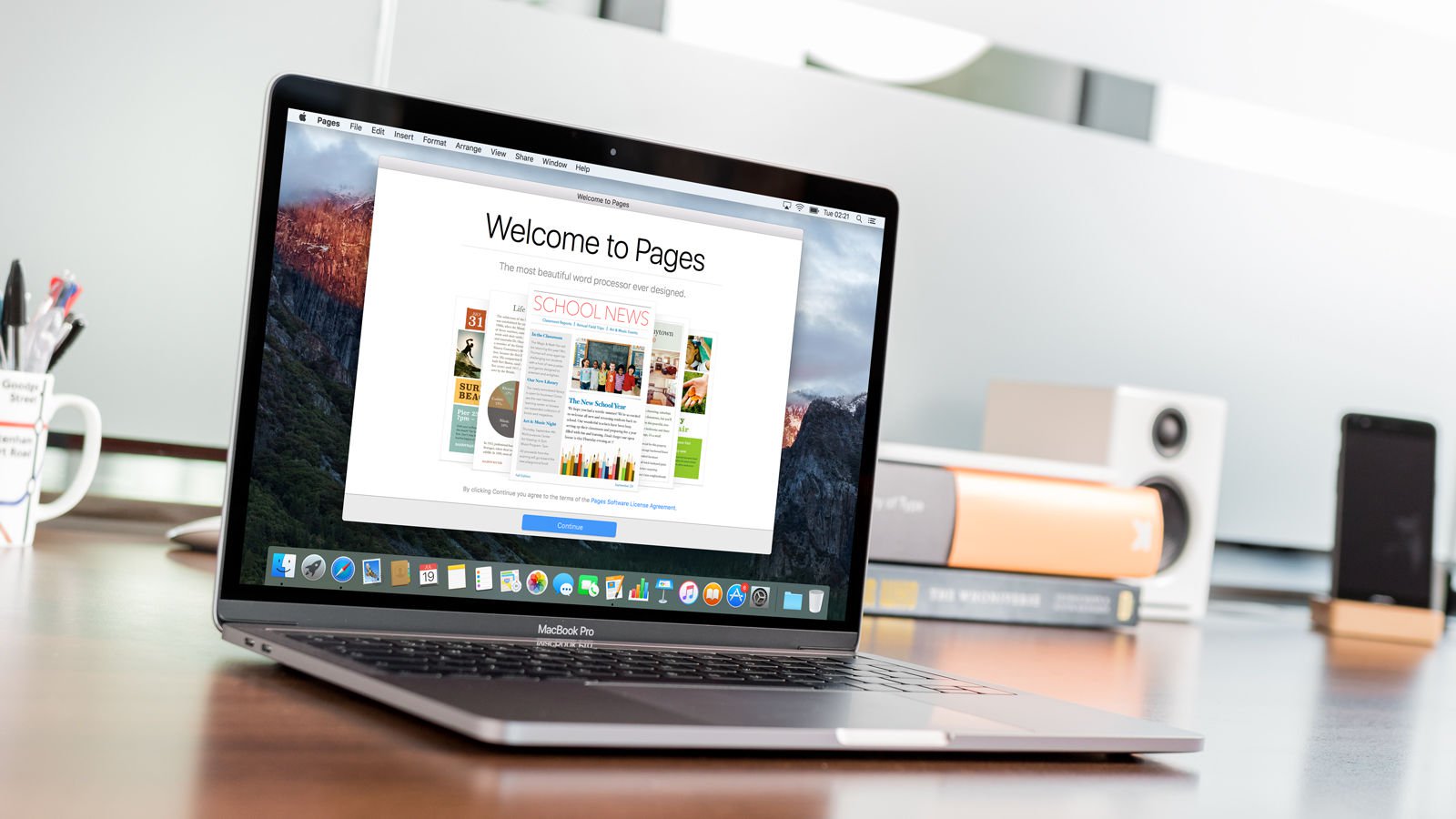
It’s what on the inside that counts, but we’ll start with a quick look at the outside of the 13-inch MacBook Pro.
As you’d expect from an Apple laptop, the 13-inch MacBook Pro has a premium design. It comes in a darker, iPhone-inspired Space Grey, or a classic silver finish. The eye-catching Retina display - which is standard across all Apple laptops, bar the MacBook Air - is stunning.
The keyboard is full-sized and typing on it is pleasant, although it felt a little spongy compared to the Apple keyboard we were used to using, and we felt we had to press harder than we were used to in order for the keys to register. The trackpad is large and full of functionality, offering various gestures that you might be familiar with if you use an iPhone, such as pinch to zoom. Our one criticism would be that we find that we catch the touch bar with our palms when typing, which sometimes causes the cursor to move to a different position.
The design hasn’t changed since the previous generation, which introduced the Touch Bar strip that you will find along the top of the keyboard on two of the 13-inch models and all of the 15-inch models. Read about what you can do with the Touch Bar here.
If you get a MacBook Pro with a Touch Bar you will also get a Touch ID fingerprint reader, which means you can unlock your laptop with your fingerprint, rather than a password, and also use your fingerprint to pay for things using Apple Pay. Don’t expect to be waving your laptop at a payment terminal in stores, this is for shopping online only. We’ll discuss the Touch Bar in more detail below.
While it’s not as thin as the MacBook, the MacBook Pro certainly isn’t chubby. It measures 30.41cm by 21.24cm and is just 1.49cm when closed. In comparison, the MacBook is 1.31cm when closed, although that model gives the appearance of being even thinner because it tapers towards the edges to 0.35cm.
In order to be this thin the MacBook Pro does sacrifice some ports compared to older models. Prior to 2016’s upgrade you’d have found a Magsafe port for plugging into the mains, two Thunderbolt 2 ports, two USB 3 ports, and an SDXC port. Now you will find four USB 3/Thunderbolt 3 ports (the same port serves both standards). You’ll charge your laptop via this port and you’ll need an adaptor to plug in a second display or any other peripherals you might like to use that aren’t USB Type-C or Thunderbolt 3. This is one way in which the MacBook Pro beats the MacBook, the smaller model has only one USB 3.1 port which is used for charging and everything else.
Features and specs
There are three notable things about the MacBook Pro models that Apple introduced at WWDC in June 2017:
- Kaby Lake processors
- Improved graphics
- A new, lower price for the entry-level 13-inch model
We’ll start by taking a look at the new Kaby Lake processor.
Processor
Of those three things, the introduction that matters the most - and will probably rile those who bought a new MacBook Pro at the end of 2016 - is the introduction of the Kaby Lake processor.
When Apple launched the 2016 MacBook Pro in October 2016 it featured Skylake processors, despite the fact some PC laptops were already using newer Kaby Lake chips.
Eight months later and all the MacBook Pro, as well as the MacBook laptops, gained Kaby Lake processors, which should result in a decent performance bump.
We have tested 2017’s 3.1GHz 13-inch MacBook Pro (as well as the top-of-the-range 15-inch 2.9GHz MacBook Pro, reviewed here).
Looking specifically at the processor we ran the Geekbench 4.1 test and saw the following results, we have included the results of the same test performed on some older models, and also on this generation’s MacBook and 15-inch MacBook Pro as a point of comparison.
| Model | Multi-core | Single-core |
| 3.1GHz, dual-core, i5, 13in MacBook Pro, 2017 | 9354 | 4433 |
| 1.2GHz MacBook 2017 | 6835 | 3667 |
| 2.9GHz, dual-core i5, 13in MacBook Pro, 2016 | 7537 | 3797 |
| 2.0GHz, dual-core i5, 13in MacBook Pro, 2016 | 7095 | 3632 |
| 1.6GHz 13in MacBook Air 2015 | 5530 | 3040 |
| 2.9GHz, quad-core, i7, 15in MacBook Pro, 2017 | 15731 | 4739 |
The difficulty here is that the models we are comparing aren’t the same in terms of specifications. You would expect a 3.1GHz processor to do better than a 2.9GHz processor even if there wasn’t a processor generation leap to consider. That said, an increase from 7537 to 9354 is still good, especially when you consider that this is 2017’s entry-level Touch Bar model compared to the 2016 entry-level Touch Bar model.
Note that you can’t compare the dual-core 2.9GHz processor in the 2016 model with that in the 15-inch MacBook Pro for 2017 either because the 15-inch Pro has a quad-core processor - and four processors beats two.
Speaking of which, this is one area of disappointment with regards to processors though. For a range of laptops with pro status, it is disappointing that while the 15-inch models have quad-core processors, the 13-inch models still have only dual-core processors.
To get a better understanding of this difference, read: How to choose the Mac with the best processor for your needs.
RAM
Another area where the 13-inch MacBook Pro can seem underpowered in comparison to the 15-inch models is RAM. All the 13-inch models offer 8GB RAM (although there is a build-to-order option for 16GB RAM). The 15-inch models ship with 16GB RAM as standard.
Chances are you don"t need 16GB RAM in your laptop, and if that"s the case, then there is no reason not to get yourself a 13-inch MacBook Pro. If you think you might need more RAM in the future - you’ll be wise to upgrade it at the point of purchase though, because you won"t be able to upgrade it later should you want to.
If you think there"s a chance that you’ll need more than 16GB RAM (highly unlikely, but some do) then you will have to look elsewhere as even the 15-inch model doesn’t yet offer 32GB RAM, despite calls for it to do so.
Graphics
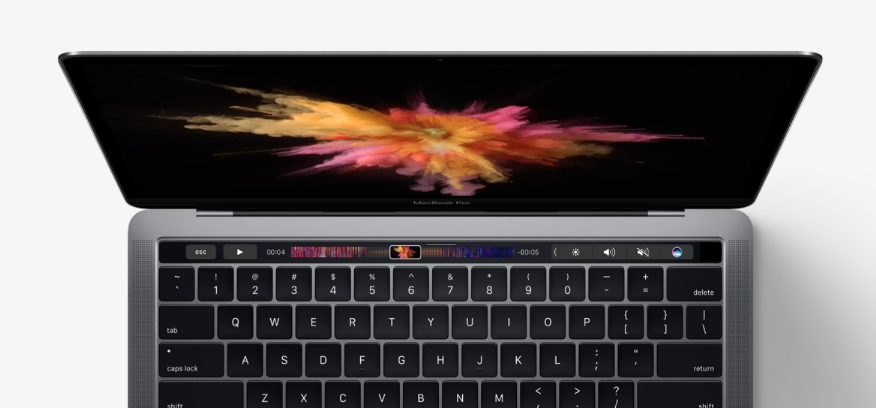
The 13-inch models also offer only integrated graphics cards: the Intel Iris Plus Graphics 640 or 650, depending on which model you choose. The 15in models offer discrete graphics in the form of the Radeon Pro 555 or 560.
Intel’s graphics (which are integrated onto the CPU) use the computer’s RAM, while dedicated (or discrete graphics cards have their own memory. As a result, the 15-inch model is much better suited to graphic intensive work than the 13-inch model.
In many ways the graphics card is the biggest indication that these two Macs, though they share a name, are very different beasts, aimed at very different markets.
We ran a number of graphics-oriented tests on the new models including the Unigene Valley tests and the Cinebench OpenGL test
| Model | Unigene Valley FPS | Unigene Valley Score | Unigene Valley Max FPS | Cinebench R15 OpenGL FPS |
| 3.1GHz, dual-core, i5, 13in MacBook Pro, 2017 | 10.7 | 448 | 18.9 | 41.42 |
| 1.2GHz MacBook 2017 | 6.4 | 267 | 11 | 25.6 |
| 2.9GHz, quad-core, i7, 15in MacBook Pro, 2017 | 789 | 18.9 | 78.9 | |
| 3.4GHz quad-core, 27-in iMac, 2017 | 32.6 | 1,365 | 58.6 | 105.26 |
As you can see, despite the fact that the 13-inch MacBook Pro uses an integrated graphics chip, it still performs much better than the graphics processor in the MacBook. However, you can expect a leap when moving to the discrete graphics in the 15-inch model, and even more so when you look at the graphics processor in the 27-inch iMac, which blew everything else away.
While there is nothing wrong with Apple offering a lower specced 13-inch laptop, to sit between the MacBook and the 15-inch MacBook Pro, it just feels that there is a gap still to fill in terms of a 13-inch pro laptop.
However, there is another way of looking at it. Not every pro user is going to be doing graphics intensive work. Some professional users are looking for a machine to run business applications on. And those don’t tend to be graphics intensive apps.
On the other hand, if you are looking for a laptop to play games on, then we wouldn’t recommend the 13-inch MacBook Pro for this purpose.
Is the MacBook Pro a better choice for them than the MacBook? As you can see from these results, the answer is yes, if you are looking for better graphics performance then the 13-inch MacBook Pro will give you better results than the MacBook. But if you really care about graphics capabilities then you should look elsewhere in Apple’s range.
But what about the creative pro users who don’t want to lug around a 15-inch laptop? Where Apple is offering a solution for business users who would prefer a 15-inch model in the form of the old 2015 15-inch MacBook Pro (which features an older Broadwell processor) we just think the 13-inch MacBook Pro just doesn’t get pro enough.
When you consider that the 13-inch MacBook Pro, topping out at almost £2,000 - which is certainly a pro price - lacks the pro graphics card option, we question whether it deserves to be called Pro.
Display
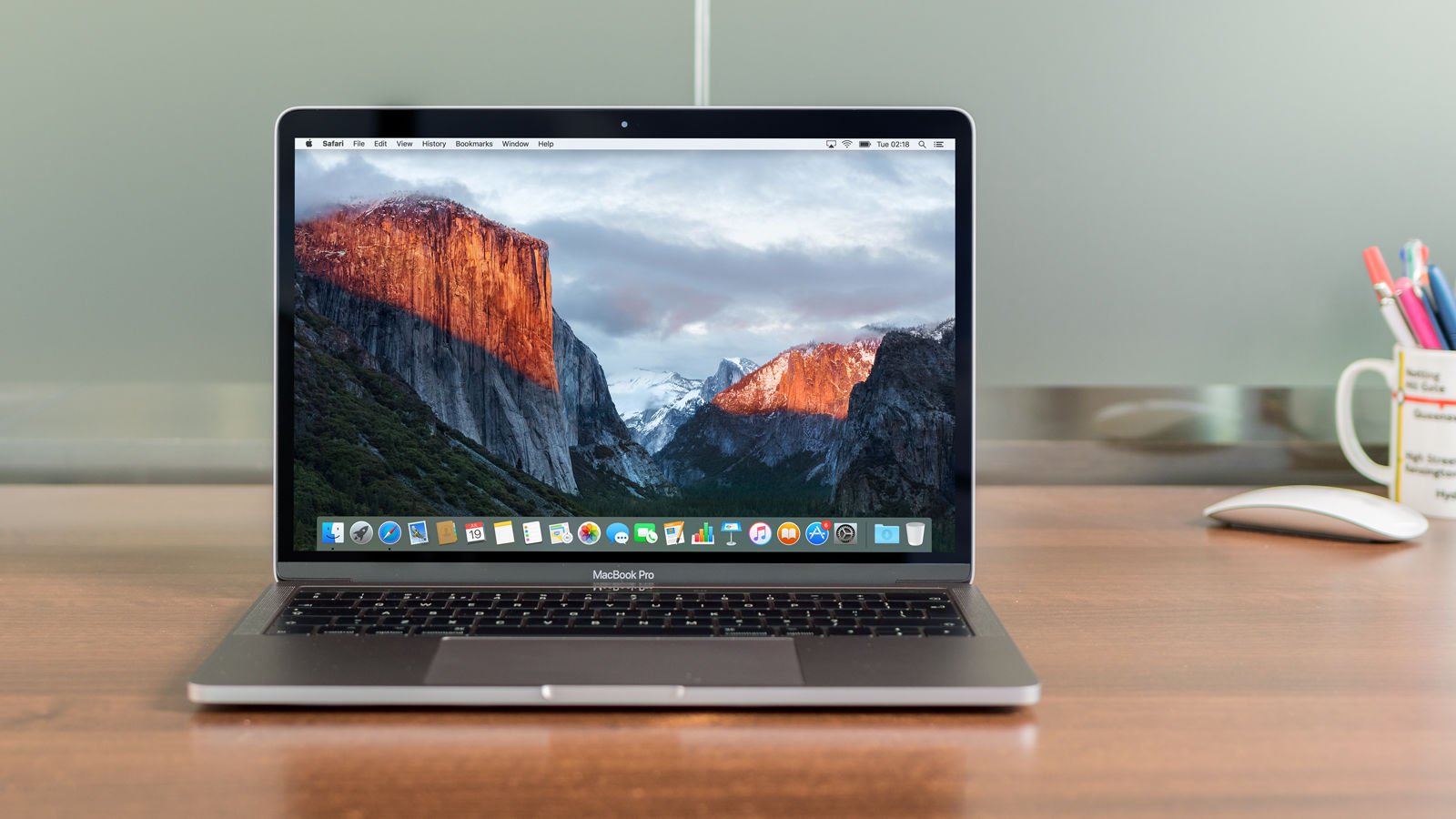
Like the 15-inch MacBook Pro the 13-inch MacBook Pro has a gorgeous, backlit Retina display with support for millions of colours, and yes, it looks amazing as we’ve come to expect from Apple.
The display actually measures 13.3in diagonally and has 2560x1600 native resolution at 227 ppi (the 15-inch resolution is a lower 220 ppi). Brightness is 500 nits. The screen isn’t quite on par with the iMac display that now offers support for 1 billion colours and 8-bit dithering, but it’s not bad. One criticism of the 15-inch MacBook Pro is the fact that it doesn’t offer a 4K display, but that’s not relevant at this size.
Storage
There are three variants of 13-inch MacBook Pro model in terms of storage. At the entry level is a paltry 128GB storage. While this may be sufficient, if you have a large photo library or make a lot of home videos you will probably quickly fill that up. If you are just using your laptop to create Pages documents the size of your drive may not be important - in fact you could happily exist with this small drive and store everything you create in iCloud - which might end up costing you £0.79 a month or £2.49 a month for 200GB. You can even get 2TB of cloud storage for £6.99 a month.
If storing your data in the cloud doesn’t appeal then the other choices in terms of internal storage for the MacBook Pro are 256GB or 512GB. Note: you don’t have to buy the model that comes with that amount of storage - you could, for example, choose the non-Touch Bar MacBook Pro and upgrade it to 512GB or even 1TB of storage for a price.
Apple only uses Flash storage in its laptops. This is significantly faster than the moving storage you will find in some iMac models and is the reason why sometimes MacBook laptops perform better than the desktop counterpart.
To test how well the storage performed we ran a test where we timed how quickly we could copy and paste a 4GB file and also ran the AJA System read and write test.
| Model | AJA System read MB/s | AJA System write MB/s | 4GB Finder Copies (seconds) |
| 3.1GHz, dual-core, i5, 13in MacBook Pro, 2017 | 2887 | 2070 | 3.66 |
| 1.2GHz MacBook 2017 | 1536 | 1038 | 6.3 |
| 2.9GHz, quad-core, i7, 15in MacBook Pro, 2017 | 2574 | 2054 | 4.48 |
| 2.3GHz dual-core, 21.5in iMac, 1TB HD, 2017 (non Retina) | 102 | 102 | 78.68 |
As you can see from the above table, the entry-level iMac, which has a hard drive performed abysmally in comparison with the flash storage in the other models.
Touch Bar
One feature that could be useful, but seems a bit gimmicky to us if we’re honest, is the Touch Bar.
The Touch Bar, which seems to be Apple’s alternative to a touchscreen, is actually more difficult to use than a touchscreen as you need to have your eyes both on the keyboard and the screen in order to use it.
The Touch Bar isn’t completely pointless though. Along with Touch ID capabilities, there is integration with a number of Apple apps, such as Safari, which gains forward and backwards buttons, or Mail that gains autocomplete suggestions.
What really matters to creative pro users, though is apps like Photoshop, and to business users, Office. And the good news is both Microsoft and Adobe have embraced the Touch Bar already and offer useful tools.
Although using the Touch Bar does take some getting used to there are some fun implementations. We’d like to see features like the Dock replicated there, and we expect that the launch of MacOS High Sierra will bring more in the way of Touch Bar integration with apps.
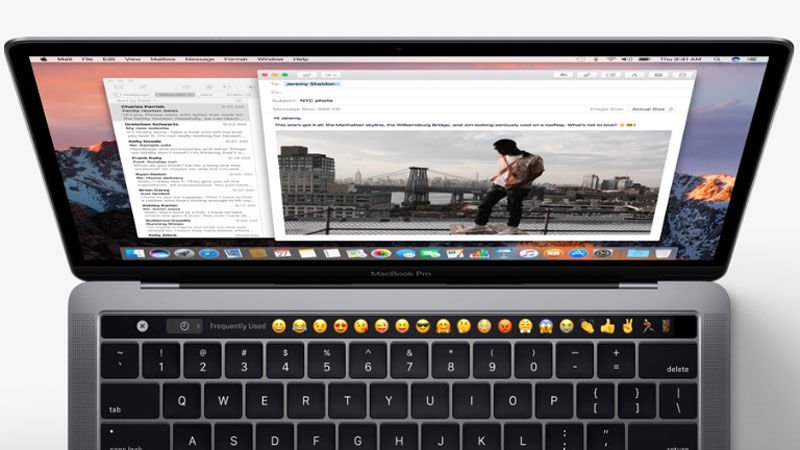
However, if Apple’s recent introduction of a second non-Touch Bar MacBook Pro at the 13-inch level may be in response to slower than expected sales of the new Touch Bar enabled MacBook Pro models.
There have been reports suggesting that Apple customers are picking the non-Touch Bar models over their more expensive siblings, and it may well be that Apple is responding to the interest in the non Touch-Bar equipped laptops.
It’s also been noted that Apple didn’t introduce a new Touch Bar enabled keyboard with its updated iMacs, something that had been anticipated. So perhaps the Touch Bar hasn’t been the success Apple was hoping it would be.
Ports
One other thing that could be beneficial to pro users is USB-C with Thunderbolt 3. Two ports in the case of the non-Touch Bar 13-inch models, four in the case of the Touch Bar 13-inch and 15-inch models.
For everyone else this may be a bit of a hindrance because currently not many devices have USB-C with Thunderbolt 3, while existing devices that use older USB standards will require an adaptor.
Currently, the only MacBooks to offer a USB A port are the older 2015 15-inch MacBook Pro and the MacBook Air, that Apple has probably kept on sale predominantly for the sake of laptop users who require that port.
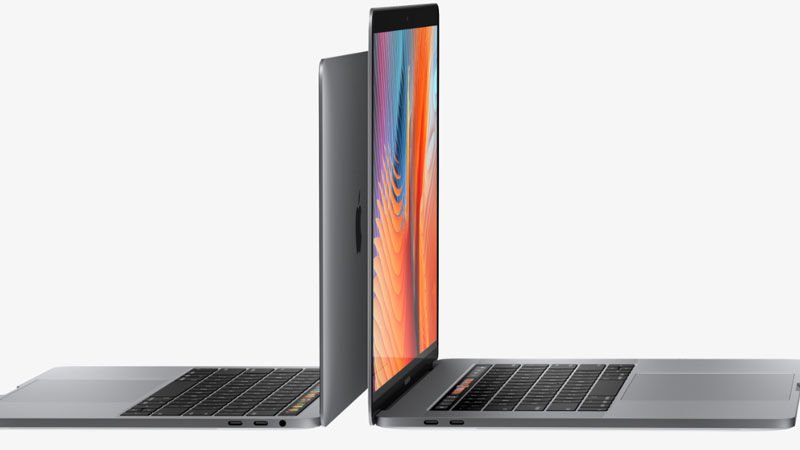
No comments:
Post a Comment